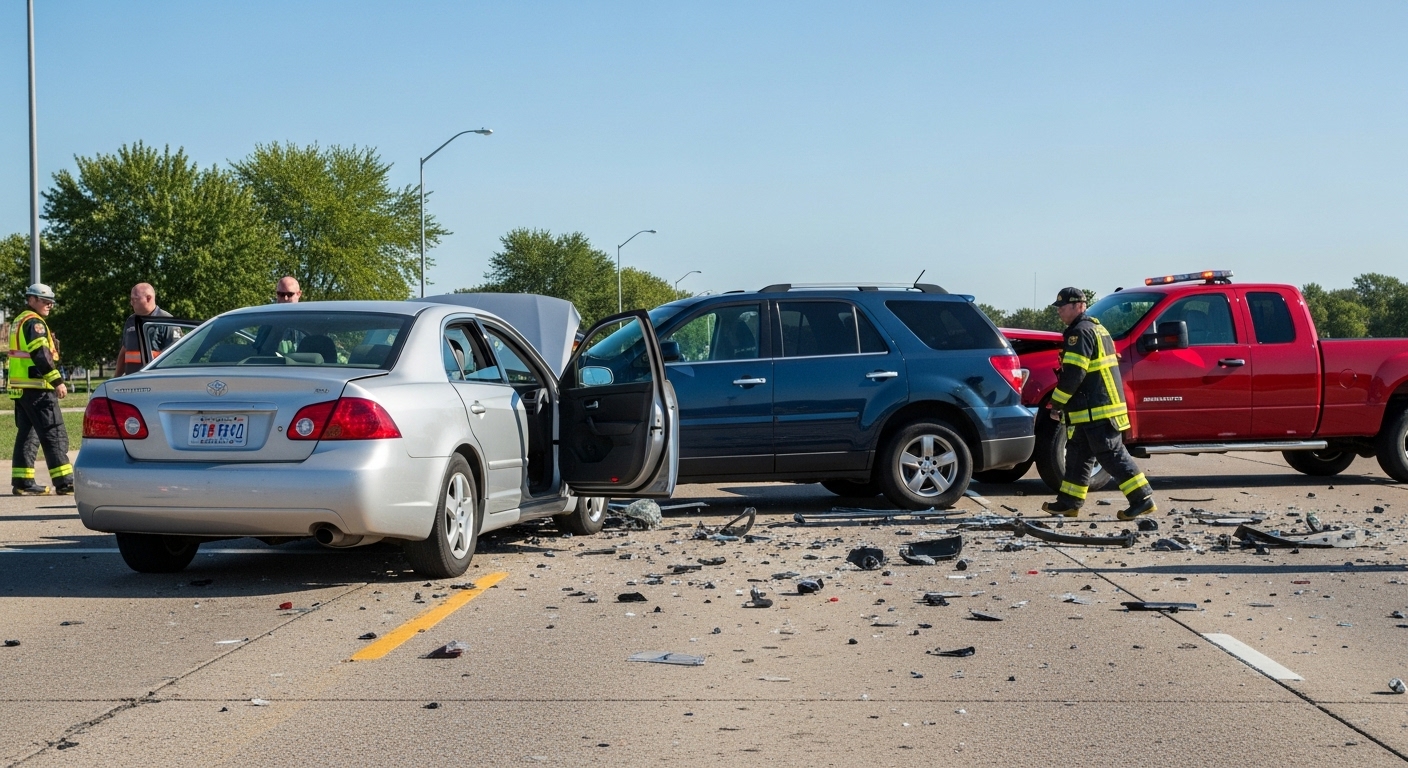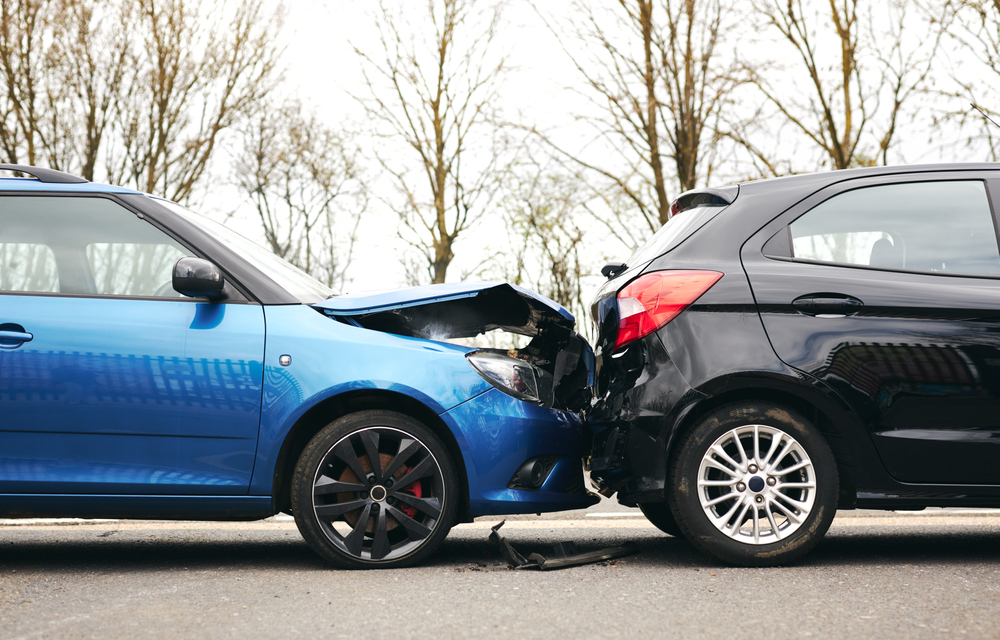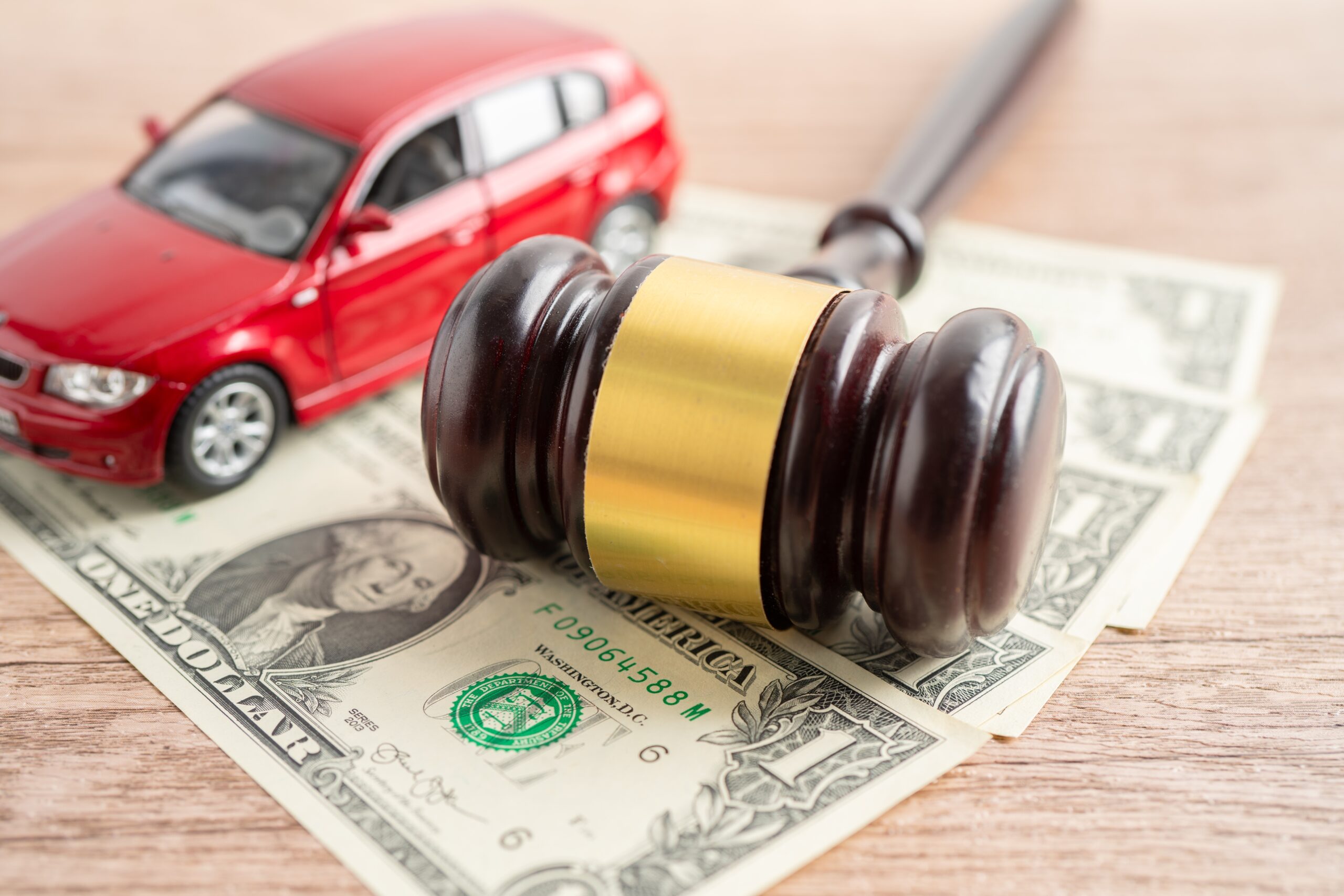How Can You Tell Who Hit Who in a Car Accident
You can tell who hit who in a car accident by carefully piecing together evidence like the physical damage to the vehicles, the official police report, and statements from independent witnesses.
In the chaotic moments after a crash, everything can feel like a blur, making it difficult to understand the sequence of events. However, a clear story often emerges when you know what to look for, helping to determine how you can tell who hit who in a car accident and who should be held accountable.
When another driver’s mistake upends your life, the question of fault becomes central to everything. It impacts insurance claims, financial recovery, and your ability to get the resources you need to heal.
The process of determining liability, which is the legal term for responsibility, is not about pointing fingers. It is about uncovering the facts so that fairness can prevail.
The Building Blocks of Proof: Key Evidence in a Crash
Insurance companies and legal professionals do not simply take one person’s word over another. Instead, they act like investigators, gathering and analyzing different types of evidence to create a complete picture of the collision.
Each piece serves as a clue that helps answer the question of who caused the accident.
The Story Told by Vehicle Damage
The cars themselves often provide the most honest account of the crash. The location, type, and severity of the physical damage can speak volumes about the forces involved and the direction of the impact.
An experienced eye can read this damage like a roadmap to the moment of collision.
Consider these common patterns:
- Rear-End Damage: A crumpled rear bumper and trunk on one car, along with corresponding front-end damage on another, almost always indicates a rear-end collision.
- T-Bone or Side-Impact Damage: Severe damage to the driver or passenger side doors suggests a side-impact crash, common at intersections. The angle and depth of the damage can help show the speed of the striking vehicle.
- Paint Transfer: Flecks of paint from one car found on another can confirm contact and help establish how the vehicles were positioned relative to each other during the crash.
The Official Police Report
When police respond to an accident scene, they create an official crash report. This document is a critical piece of the puzzle, though it is not always the final word on fault. The officer is trained to document the scene objectively and will often include several key details.
The report typically contains:
- A Diagram of the Accident Scene: The officer will draw a sketch showing the final resting positions of the vehicles, skid marks, debris, and other important features.
- Driver and Witness Information: It will list the names and contact information for everyone involved, including any independent witnesses who saw what happened.
- An Officer’s Narrative and Opinion: The officer will write a summary of their observations and may cite one of the drivers for a traffic violation, like failing to yield or following too closely.
While a traffic ticket is strong evidence, it does not automatically prove fault for a civil claim. It is, however, a very persuasive piece of information.
Witness and Participant Statements
What people saw can be powerful. Independent witnesses with no connection to either driver are often seen as the most credible sources. Their unbiased perspective can confirm or contradict the stories told by the drivers, who may have conflicting memories or motivations.
It is natural for drivers involved in a crash to have different recollections. The event is traumatic and happens in an instant. This is why getting statements from anyone who saw the crash, from a pedestrian on the corner to another driver on a busy road like Route 53, can be so valuable in clearing up confusion.
How Can You Tell Who Hit Who in Common Car Accident Scenarios?
While every crash is unique, many fall into common patterns for car accidents. Understanding how fault is generally viewed in these scenarios can provide some clarity. These principles are often guided by Illinois traffic laws, which set the rul
es of the road for everyone.
Rear-End Collisions
The driver who hits a car from behind is usually considered at fault. The law, specifically the Illinois Vehicle Code section on following too closely (625 ILCS 5/11-710), requires drivers to leave enough space to stop safely.
However, there are exceptions. If the front driver suddenly slammed on their brakes for no reason or had broken brake lights, they might share some of the responsibility.
Left-Turn Accidents
Crashes often happen when one driver is making a left turn at an intersection. The driver turning left has a duty to yield the right-of-way to oncoming traffic. If a collision occurs, it is frequently because the turning driver misjudged the speed or distance of an approaching vehicle.
However, if the straight-driving car was speeding significantly or ran a red light, they could be found at fault.
Side-Impact or “T-Bone” Crashes
These accidents are common at intersections controlled by stop signs or traffic lights. Determining who hit who often comes down to figuring out who had the right-of-way.
Did someone run a red light? Did a driver fail to stop at a stop sign? Evidence like traffic camera footage and witness statements are critical in these situations.
Modern Technology’s Role in Determining Fault
Today, technology provides new ways to get a clear and unbiased view of an accident. Video footage and data recorders can cut through the confusion and show exactly what happened in the seconds leading up to a collision.
Dashboard Cameras (Dash Cams)
An increasing number of drivers use dash cams to record their trips. This video footage can be the single most decisive piece of evidence. It can show who had a green light, who swerved into another lane, or how fast a car was traveling.
Event Data Recorders (EDRs)
Most modern vehicles are equipped with an Event Data Recorder, similar to an airplane’s black box. According to the National Highway Traffic Safety Administration (NHTSA), these devices can record important data in the moments before, during, and after a crash.
This data may include:
- Vehicle speed
- Whether the brakes were applied
- The force of the impact
- Steering wheel angle
Accessing and interpreting this EDR data requires special tools and knowledge, but it can provide objective, scientific proof of what a vehicle was doing right before impact.
Actions to Take from Home to Preserve the Facts
After the immediate crisis of an accident has passed and you are safely at home, your mind might be racing. You can use this time to take a few simple, productive steps to help document what you remember.
Preserving these details while they are fresh in your mind can be incredibly helpful later.
- Write It All Down: Open a notebook or a document on your computer and write down every single detail you can recall about the accident. Start from a few minutes before the crash and continue through the aftermath. Do not worry about grammar or structure, just get the memories down.
- Draw a Diagram: Sketch out the accident scene as you remember it. Draw the streets, traffic signals, lane markings, and the paths your car and the other vehicle took. This visual can help you explain your perspective more clearly.
- Organize Your Documents: Create a specific folder for everything related to the accident. This includes the police report exchange slip, photos you took at the scene, information from the other driver, and any future medical bills or car repair estimates.
Taking these steps after a car accident helps you create your own record of events, which can be a valuable reference as you navigate the insurance claims process.
FAQ
We know this process raises many questions. Here are answers to some common concerns people have when trying to figure out who was at fault.
What happens if the other driver and I both blame each other for the accident?
This is a very common situation. When stories conflict, insurance companies and legal professionals will rely heavily on the objective evidence, such as the police report, vehicle damage, and any available witness statements or video footage, to make a determination.
If the police gave me a ticket at the scene, does that automatically mean I am 100% at fault?
Receiving a traffic ticket is a strong indicator of fault, but it is not the absolute final word in a civil claim. It is possible to fight the ticket in court. Even if the ticket stands, there may be other contributing factors to the accident that could mean the other driver shares some of the responsibility.
How can fault be determined if there were no witnesses to my car accident?
In a crash with no independent witnesses, the physical evidence becomes even more important. The location and severity of the damage to both cars, skid marks on the road, and data from the vehicles’ EDRs can often tell the story of the crash without anyone else having seen it.
Does bad weather, like snow or heavy rain in the Chicago area, change how fault is decided?
While weather conditions can contribute to an accident, drivers are legally required to adjust their driving for those conditions. For example, a driver is expected to slow down and increase their following distance in rain or snow. Simply blaming the weather is rarely a successful defense if a driver was operating their vehicle in an unsafe manner for the conditions.
Can I challenge the insurance company’s decision about who was at fault?
Yes, you can absolutely challenge an insurance company’s determination of fault. Their initial decision is not legally binding. If you have evidence that contradicts their finding, you have the right to present it and argue for a different outcome.
Finding Clarity in the Confusion
The aftermath of a car accident is a stressful and disorienting time. Trying to piece together what happened while also dealing with injuries and vehicle repairs can feel impossible. You may feel like your side of the story is not being heard. Remember, determining who is at fault is a process based on facts, not just opinions. You have the right to have all the evidence carefully considered.
If you struggle to make sense of what happened and feel lost in the process, you do not have to face it alone. The legal team at Vito & Dollenmaier Law focuses on being a strong voice for those who have been injured.
We listen to your story, investigate the facts, and help you understand your options for moving forward. Please call us at (224) 539-8821 for a supportive, no-cost conversation.



